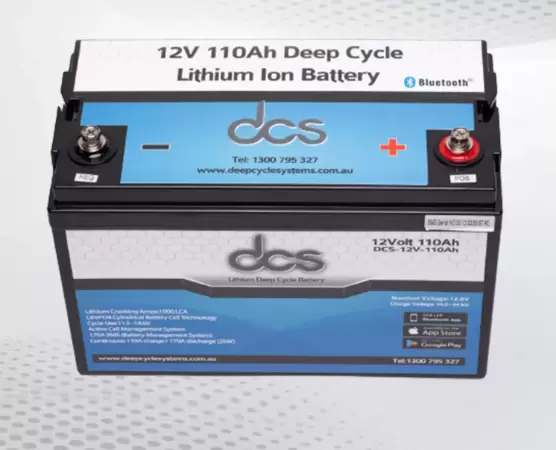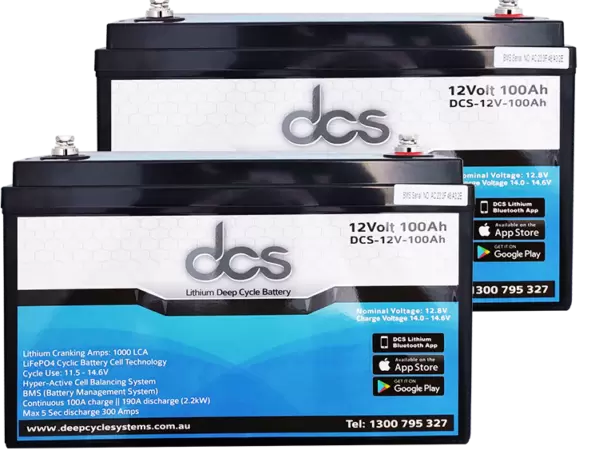Are you looking for a deep cycle battery that will provide reliable, long-lasting power for your off-grid home, RV, boat, or other project? If so, you’ve come to the right place. This blog post looks at what makes a quality deep-cycle battery and how to choose the best one for your needs. We’ll explore the different types of deep-cycle batteries available, discuss the pros and cons of each, and offer some tips to help you make an informed decision.
Understanding Deep-Cycle Batteries
When selecting a quality deep-cycle battery, it’s essential to understand what makes them different from other types of batteries. Deep-cycle batteries are specifically designed to provide steady power over an extended period, making them perfect for off-grid applications like solar power systems, RVs, and boats.
Unlike starter batteries, designed to deliver a high amount of current for a short burst to start an engine, deep-cycle batteries are built to provide a consistent, long-lasting power supply. This is achieved through thicker plates and denser electrolytes, which allow for repeated discharge and recharge cycles without causing damage or loss of capacity.
Another essential characteristic of deep-cycle batteries is their ability to be discharged and recharged. This means you can use more of the battery’s capacity before recharging it, which is ideal for applications where you need to rely on the battery for extended periods.
Types of Deep-Cycle Batteries
When choosing a deep-cycle battery, you have several options to consider. Let’s explore the different types of deep-cycle batteries available on the market.
Flooded Lead Acid Batteries:
Flooded lead acid batteries are the most common and affordable type of deep-cycle battery. They are reliable and can handle deep discharges. However, they require regular maintenance, such as checking electrolyte levels and adding distilled water.
Sealed Lead Acid Batteries:
Sealed lead acid batteries, also known as valve-regulated lead acid (VRLA) batteries, are maintenance-free and don’t require adding water. They are more expensive than flooded batteries but are safer to use as they are sealed and won’t leak electrolytes.
Gel Batteries:
Gel batteries use a gel electrolyte, making them spill-proof and vibration-resistant. They are ideal for applications where safety is a concern, such as in RVs or boats. However, they have a slower charging rate compared to other types.
AGM Batteries:
AGM (Absorbent Glass Mat) batteries are known for superior performance and high cycle life. They have a faster charging rate, lower self-discharge, and can handle deep discharges. AGM batteries are suitable for a wide range of applications and are often used in renewable energy systems.
Capacity and Amp Hours
Now that we understand the basics of deep-cycle batteries let’s dive into the critical factors regarding capacity and amp hours.
Capacity refers to the total energy a battery can store, usually measured in ampere-hours (Ah). It is an essential consideration because it determines how long the battery will be able to power your off-grid system before needing to be recharged. A higher-capacity battery will provide longer runtime, but it’s important to note that it will also be physically larger and heavier.
Amp-hours (Ah) measures how much current a battery can deliver over a specified period. It determines how much power the battery can supply at a given rate. Choosing a storm with the appropriate amp hours for your specific needs is crucial. If you have high power requirements, such as running multiple appliances or equipment simultaneously, you’ll need a higher amp hour rating battery.
Voltage
When choosing a deep-cycle battery, it’s crucial to consider the voltage. Voltage is the measure of electrical potential difference, determining the power output and compatibility of the battery with your devices and systems. Deep-cycle storms typically come in two standard voltages: 6 volts and 12 volts.
A 6-volt deep-cycle battery is often used to achieve higher voltage systems in series configurations. This is common in off-grid solar power systems, where multiple batteries are connected in series to create a 12-volt or 24-volt system. Combining multiple 6-volt batteries allows you to achieve the voltage required for your specific energy needs.
On the other hand, a 12-volt deep-cycle battery is the most widely used and readily available option. It’s commonly used in RVs, boats, and small-scale renewable energy systems. The 12-volt system is versatile and compatible with various devices and equipment, making it a popular choice for many off-grid applications.
Maintenance and Lifespan of Deep Cycle Solar Battery
There are a few essential things to remember regarding the upkeep and Lifespan of your deep cycle solar battery. Proper care is crucial for ensuring your battery’s longevity and optimal performance. One key maintenance aspect is regularly checking the electrolyte levels in flooded lead acid batteries and adding distilled water as needed. This helps to prevent the plates from becoming exposed and drying out, which can lead to a decrease in battery capacity and overall Lifespan. Keeping your battery clean and corrosion-free is essential.
Regularly inspect the terminals and clean them with baking soda and water if any corrosion occurs. This will help to maintain good electrical connections and prevent any potential damage. Another factor that can impact the Lifespan of your battery is the depth of discharge (DOD). It’s recommended to avoid discharging your deep-cycle battery below 50% of its capacity regularly, as this can shorten its Lifespan. Monitoring your battery’s state of charge and recharging it before it gets too low is critical to prolonging its life.
Considerations for Your Application
Now that you understand deep-cycle batteries let’s delve into some important considerations to remember when choosing the right one for your specific application. Each application has unique requirements and demands, so it’s crucial to consider these factors to select the best deep-cycle battery. Think about the power requirements of your project. Are you powering a small off-grid cabin with minimal electrical needs, or do you have a large RV with multiple appliances and equipment? Understanding your power demands will help you determine your battery’s capacity and amp hours.
Consider the environmental conditions your battery will be subjected to. Will it be exposed to extreme temperatures, vibrations, or potential impacts? Sure, deep-cycle batteries are better suited for harsh environments, such as gel batteries, which are spill-proof and resistant to vibrations, making them ideal for use in RVs or boats. Another essential factor to consider is your application’s space and weight limitations. Deep-cycle batteries come in various sizes and weights, so choose one that fits comfortably in your designated space and can be easily transported if needed.
Price and Warranty
Let’s talk about an important aspect many consider when choosing a deep-cycle battery: price and warranty. When it comes to price, it’s essential to find a balance between your budget and the quality of the storm. While cheaper options may seem appealing, they may offer a different level of performance or Lifespan than more expensive batteries. It’s worth investing in a high-quality battery that will provide reliable power for extended periods, even if it means spending more upfront.
It’s crucial to consider the warranty offered by the battery manufacturer. A good warranty provides peace of mind and protects you against any defects or issues that may arise. Look for a guarantee that offers a reasonable coverage period and clearly outlines what is included. Some manufacturers offer more extended warranties for deep-cycle batteries, indicating their confidence in the product’s durability.
FAQs
Can I use a deep-cycle battery to start my car?
Deep-cycle batteries are not designed for high-current, short-duration applications like starting a car. They are specifically built to provide a consistent, long-lasting power supply over an extended period. For creating your car, it’s best to use a starter battery designed to deliver a high amount of current for a short burst.
How often do I need to recharge a deep-cycle battery?
The frequency of recharging your deep-cycle battery depends on your usage and the battery’s capacity. Recharging your battery before it falls below 50% of its capacity is generally recommended. Regularly discharging a deep-cycle battery below this threshold can shorten its Lifespan.
Can I use a deep-cycle battery in extreme temperatures?
Deep-cycle batteries can be used in various temperatures, but extreme cold or hot temperatures can affect their performance and Lifespan. It’s best to check the manufacturer’s specifications to determine the temperature limits of the battery you are considering.
How long do deep-cycle batteries typically last?
The Lifespan of a deep-cycle battery can vary depending on factors such as usage, maintenance, and the specific type of battery. On average, deep-cycle batteries can last anywhere from 3 to 10 years. Proper care, regular recharging, and avoiding deep discharges can help extend the Lifespan of your battery
Conclusions
It is essential to carefully consider your specific needs and requirements when selecting a deep-cycle battery. Understanding the different types of deep-cycle batteries available and their capacity, voltage, and maintenance requirements is crucial in making an informed decision. When choosing a deep-cycle battery, it is essential to consider your application and its specific demands on the battery. Whether you are using the battery for solar power storage, RV camping, or marine applications, understanding the unique requirements of each application will help you choose the correct battery for your needs.



